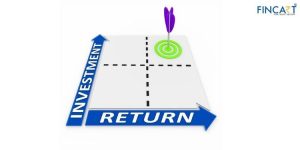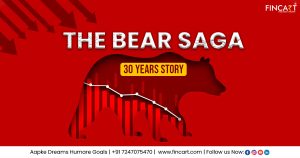Table of Contents
ToggleWhen you’re walking through a bustling market, you see all kinds of different shoppers. Let’s talk about two specific types. First, the kind of shoppers that haggle over the price of every item with the vendors. They are always bargaining and looking to get the best possible deals on whatever items they buy. A flashing sale sign lures them in easily, even if it’s a sale of something they didn’t even originally plan to get.
These people are inherently on the constant lookout for great deals. The other kind would be shoppers who come in with their shopping list, they know what they want to buy, and where to buy it while being pretty good at resisting those enticing sale signs. The first kind of shopper is using an active approach to shopping and the second kind is approaching it passively. This small example aims to give you a very simple and basic understanding of what active and passive means.
In the world of finance, we have many approaches to investing, but primarily, we have two – Active Investing and Passive Investing. In this blog, we’ll take a closer look at each strategy and understand the advantages and disadvantages associated with them.
What is Active Investing?
As the name suggests, Active Investing is a hands-on approach to managing one’s investment portfolio. Active investors are constantly making decisions to buy and sell assets, aiming to outperform the market. They study assets closely and based on their research and analysis, they identify the best investment options and make decisions accordingly.
This is a demanding approach due to the dynamic nature of the market. Usually, a portfolio manager leads a team of experts to analyse factors such as market conditions and company performance and decide when to make investment moves. These professionals aim to beat the market and generate higher returns for their clients through tactical asset allocation and security selection. So in active investing, the portfolio manager wields the authority in making decisions.
What is Passive Investing?
In contrast to active investing, Passive Investing is a more hands-off approach. Passive investors are in it for the long run. Since they don’t tinker with their investments very frequently, they don’t have to pay transaction costs making this method a cost-effective way to invest. The main mantra of this strategy is to buy and hold assets as the investors are prepared to ride out any market fluctuations. Setbacks in the short term don’t phase them as they are always focused on their main goal.
Passive investors aim to closely match the results of a particular market index, instead of trying to beat it. They achieve this through investing in index funds or exchange-traded funds. These funds are created to mimic the performance of a well-known benchmark index, like the Nifty 50 or Sensex.
Also Read: Savings vs Investment: Which is a Better Road to Take?
Ready to grow your wealth?
Partner with Fincart for expert investment planning and make your money work for you.
What are the advantages and disadvantages of active and passive investing?
Here’s an overview of the pros and cons of active and passive investing approaches
| Aspect | Active Investing | Passive Investing |
| Pros | It has the potential for higher returns. | Lower transaction costs. |
| You get personalised portfolio management. | Reduced risk due to diversification. | |
| Allows opportunities for market outperformance. | It’s time-saving and not very stressful. | |
| Allows you to manage tax. | Is a transparent approach. | |
| Allow flexibility to adapt to market changes. | You have to pay less tax. | |
| Cons | Higher fees and costs. | Returns aren’t very big. |
| Trading too much leads to higher taxes. | You have limited control over individual holdings. | |
| It’s more stressful and time-consuming. | Limited opportunities for market outperformance. | |
| It’s hard to consistently beat the market. |
Now, let’s take a look at them in detail.
Pros of Active Investing:
- Through this approach, active investors aim to outperform the market, which means that if their strategies are successful, there is a potential for higher returns.
- The portfolio of active investors is actively managed by experienced and knowledgeable portfolio managers who can tailor their investments to their specific financial goals and risk tolerance.
- Active investors have the opportunity to seize undervalued assets and make the most of them.
- Even though active investors have to pay more capital gains tax than passive investors, they can employ different tax-efficient strategies like selling losing investments to balance out the taxes on the successful ones to minimise their tax liabilities.
- Active investors can quickly respond to any changes in the market. To lower their risk they can make quick adjustments to their portfolios or spot an emerging trend and capitalise on it.
Cons of Active Investing:
- Since active managers are constantly buying and selling, they suffer frequent transaction costs and fees. Over a long period of time, these expenses can mount up and eat into returns.
- On top of high transaction costs, frequent trading can result in higher capital gains taxes.
- Active investing demands time, research, and attention than passive investing. It can be stressful and time-consuming.
- Beating the market consistently is challenging, as there are many risks involved. Unforeseen changes in the market or lack of proper research can also lead to unfavourable decisions.
Pros of Passive Investing:
- Generally, passive investments have lower fees and expenses, which allows investors to keep a more significant portion of their returns.
- Due to their highly diversified portfolios, passive investors reduce the risk that comes with individual stocks or assets.
- Since this is a set-and-forget kind of approach, it helps save time and isn’t as stressful as an active approach.
- The transparency of the passive approach is reassuring for many investors, as they know which assets are mentioned in the index fund.
- Capital gains are usually lower in passive investing so the tax on those gains for the year is also lower.
Cons of Passive Investing:
- Since investments are made in low-risk and safe assets, the returns are small.
- Because passive investors generally invest in index funds or ETFs, they have no influence over the individual stocks or bonds within these funds and if certain assets underperform, they have no recourse as they are locked in.
- Since passive investors closely follow the index, they can potentially miss out on lucrative opportunities that pop up in the market.
Also Read: Factors to Consider Before Investing in ELSS Mutual Funds
Conclusion
In the words of the legendary investor Warren Buffett, “The stock market is designed to transfer money from the impatient to the patient.” On the other hand, renowned investor Robert Arnott once remarked, “In investing, what is comfortable is rarely profitable.” So it’s not about one approach being better than the other. Even though Arnott is encouraging investors to take an active approach and be on the constant lookout for opportunities, note that he is also known for his contributions to passive investing, particularly through his work on fundamental indexing. That’s why it’s important to know the merits of each approach. There’s no right or wrong way here.
You know how both approaches work as well as their advantages and disadvantages. To know which strategy suits you best, you should know your financial goals, risk tolerance, and personal preferences. You can even opt for a mix of the two approaches, as many investors believe that it’s the best way and that there’s a time and place to be active or passive. A Certified Financial Advisor or Investment Advisor can help you determine the best approach based on your circumstances.




